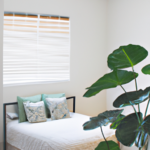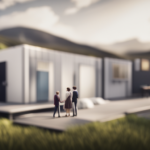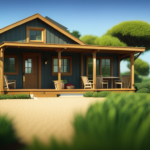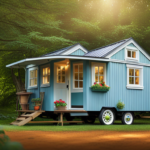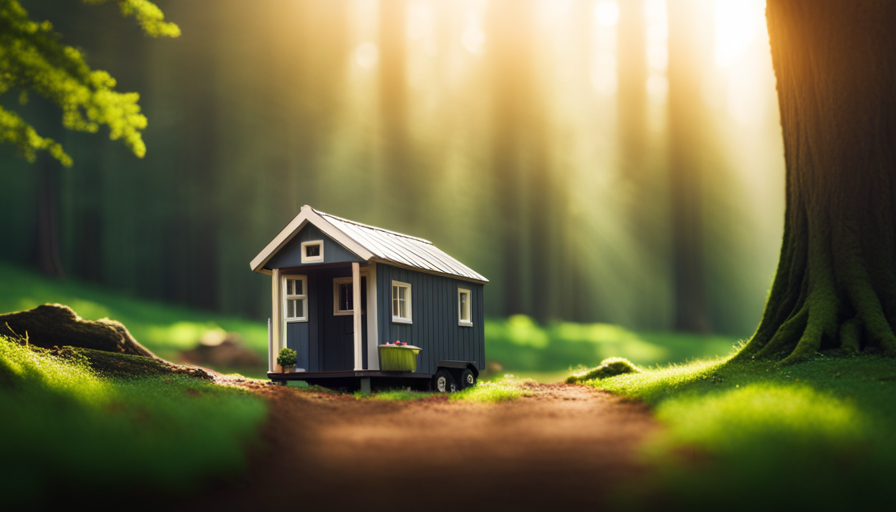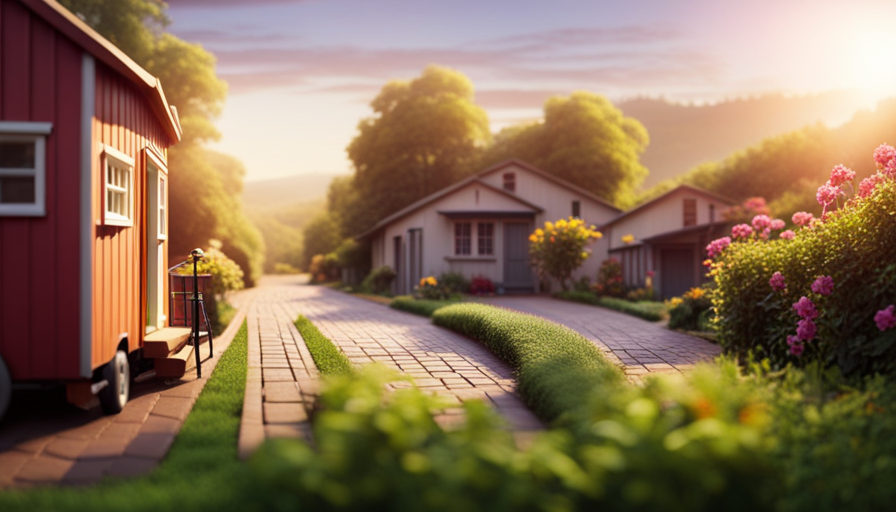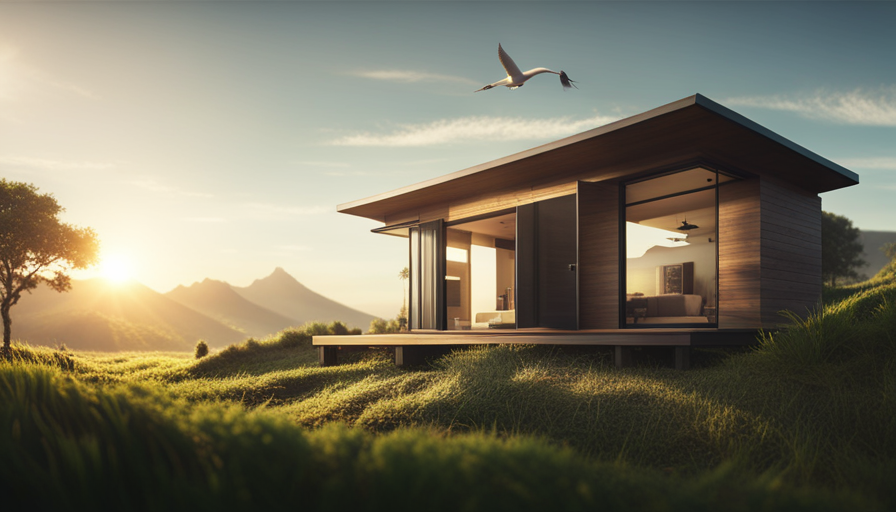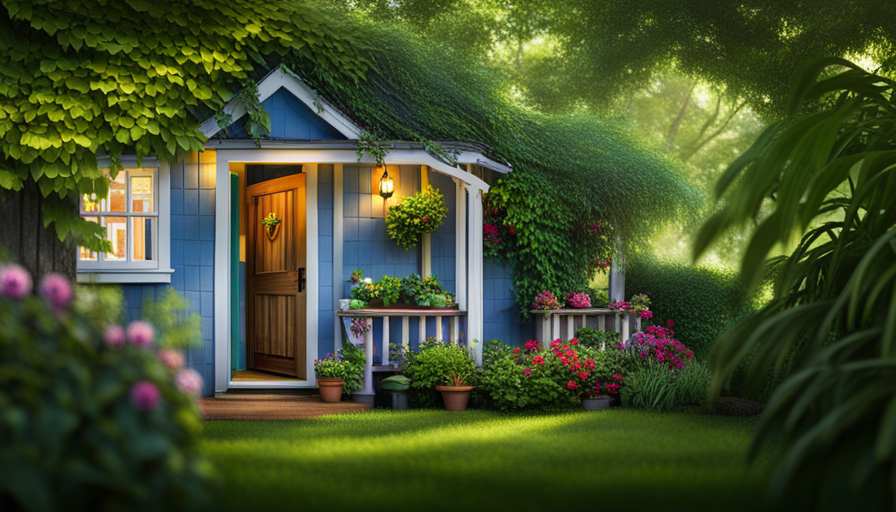If you have ever had the dream of living in a tiny house, you are not alone. Before fully committing to minimalism, it is crucial to ask yourself: is a tiny house truly the right fit for me?
Let me tell you, it’s not just about a cute, little home on wheels. It’s a lifestyle that requires careful consideration and self-reflection.
In this article, I’ll guide you through the process of determining whether a tiny house is truly your perfect match.
Key Takeaways
- Maximize storage and utilize clever storage solutions to make the most out of limited space
- Evaluate lifestyle and priorities to determine if minimalism, sustainability, and financial flexibility align with personal values
- Consider the financial implications of living in a tiny house, including adjusting spending habits and exploring loan options
- Embrace the benefits of minimalism, such as reduced stress, increased productivity, financial freedom, and environmental sustainability
Assessing Your Space Needs
Assessing my space needs, I’ll consider my lifestyle and the activities I enjoy. When it comes to living in a tiny house, maximizing storage and making use of multi-functional furniture is key. With limited space, it’s important to be strategic in how I organize and store my belongings. By utilizing clever storage solutions such as under-bed storage, built-in shelves, and hanging organizers, I can make the most out of every inch of space.

Additionally, investing in multi-functional furniture, like a sofa that can double as a guest bed or a coffee table with hidden storage compartments, allows for versatility and efficiency in a tiny house. By incorporating these strategies, I can ensure that I’ve enough space to live comfortably and enjoy the activities I love.
Now, let’s move on to evaluating your lifestyle and priorities.
Evaluating Your Lifestyle and Priorities
When considering if a tiny house is right for me, I need to take into account my lifestyle and what I prioritize. Evaluating personal values and determining space requirements are crucial steps in making this decision. Here are some key factors to consider:
-
Simplifying my life: Tiny houses promote minimalism and can help me declutter and focus on what truly matters.
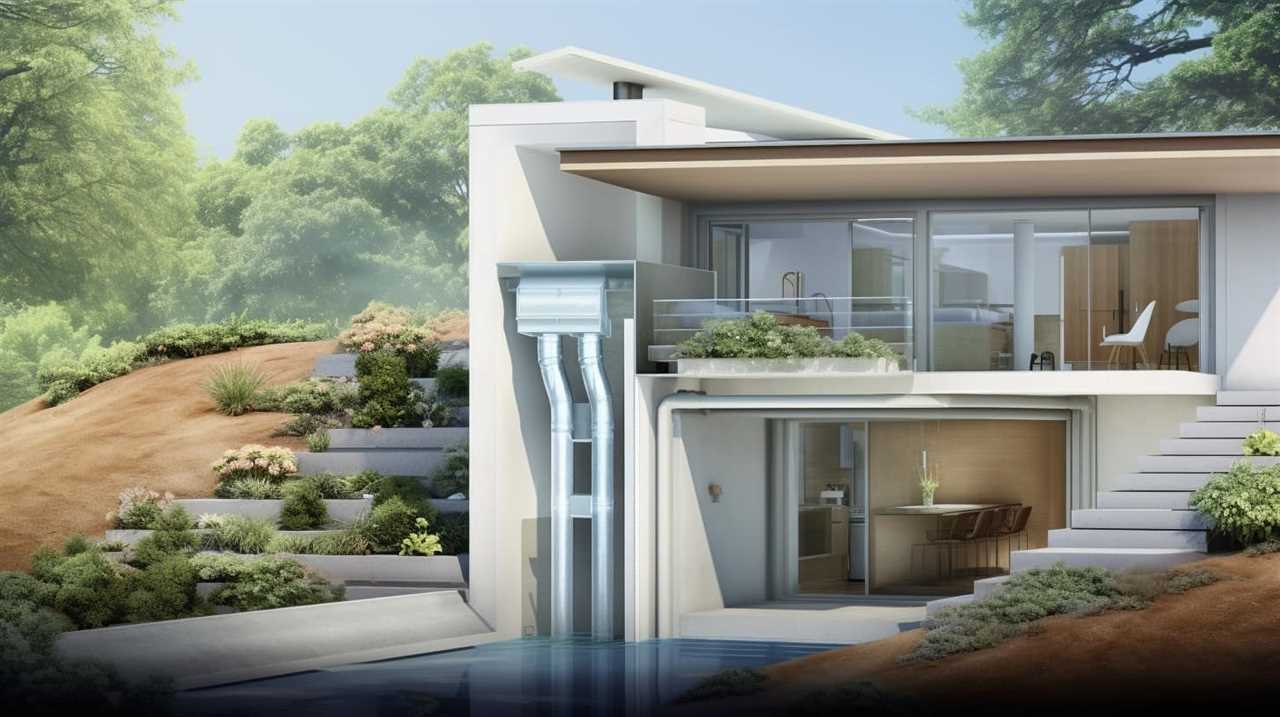
-
Environmental impact: Living in a tiny house allows me to reduce my carbon footprint and live a more sustainable lifestyle.
-
Financial freedom: Downsizing to a tiny house can significantly lower my expenses and provide me with more financial flexibility.
-
Mobility and flexibility: Tiny houses are portable, allowing me to easily relocate or travel without being tied down to a specific location.
Considering the Financial Implications
I should also consider the financial implications of living in a tiny house. While the cost of a tiny house itself may be significantly lower than a traditional home, there are other factors to consider. For instance, you may need to make adjustments to your lifestyle and spending habits to accommodate the smaller space. Additionally, it is important to explore loan options if you require financing for your tiny house. Some lenders offer specialized loans for tiny house purchases, while others may consider it a personal loan. It is crucial to carefully review the terms and interest rates before making a decision. Moreover, considering the long-term sustainability of your financial situation is essential to ensure that you can maintain your tiny house lifestyle in the future. By being mindful of your financial situation, you can create a sustainable and fulfilling life in a tiny home.
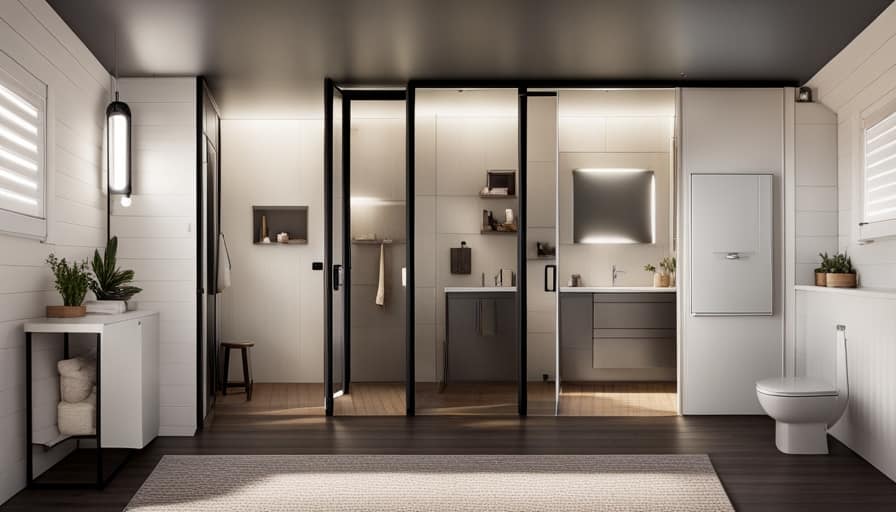
| Financial Implications |
|---|
| Adjusting lifestyle and spending habits |
| Exploring loan options |
| Considering long-term sustainability |
Now that we have explored the financial implications of living in a tiny house, let’s move on to the next section and explore the benefits of minimalism.
Exploring the Benefits of Minimalism
One of the key advantages of minimalism is that it allows me to simplify my life and focus on what truly matters. Embracing decluttering and exploring simplicity can have a profound impact on our overall well-being.
Here are some benefits of incorporating minimalism into our lives:
-
Reduced stress: By decluttering our physical spaces and letting go of unnecessary possessions, we create a calming environment that promotes relaxation and peace of mind.
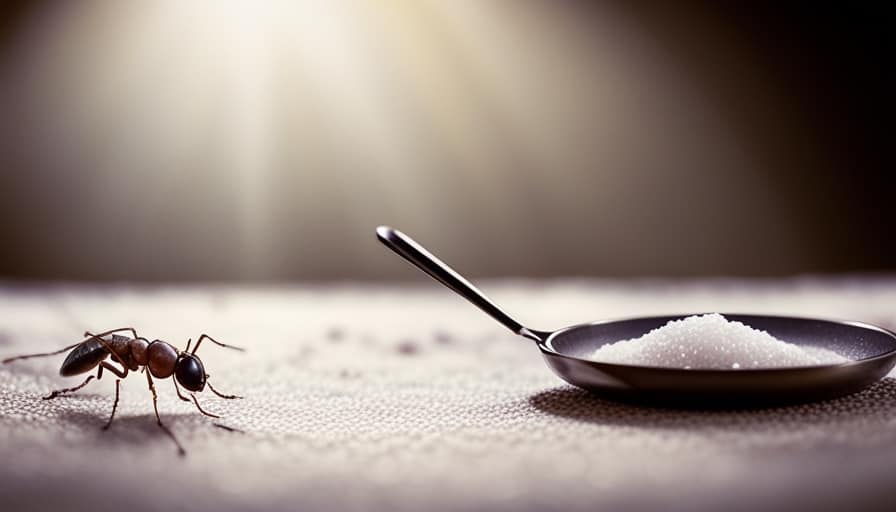
-
Increased productivity: When we eliminate distractions and simplify our surroundings, we can better focus our energy and attention on the tasks that truly matter, leading to increased productivity.
-
Financial freedom: Minimalism encourages us to evaluate our spending habits and prioritize our needs over wants. This can lead to reduced expenses and financial freedom.
-
Environmental sustainability: By adopting a minimalist lifestyle, we consume less and reduce our carbon footprint, contributing to a more sustainable planet.
Understanding the Challenges of Tiny Living
Despite the limited space, living in a tiny house offers unique opportunities for organization and creativity.
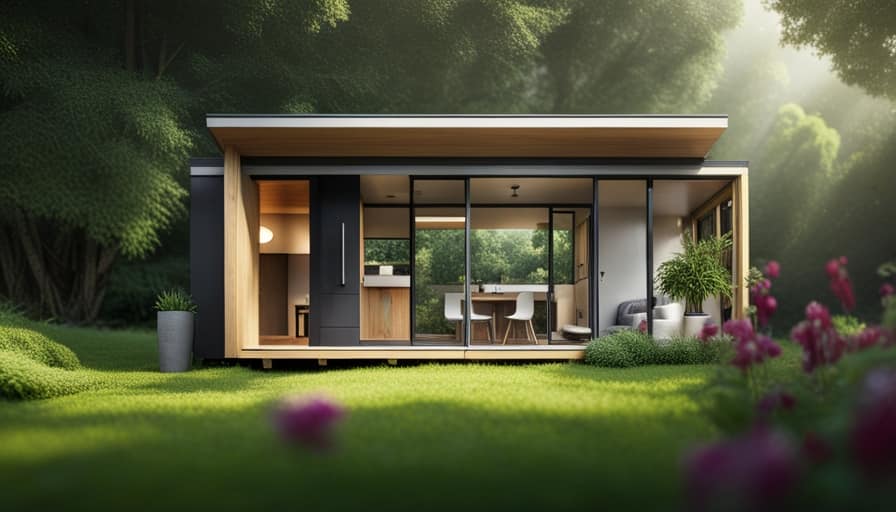
One of the main challenges of tiny living is space optimization. It requires careful planning and creative solutions to make the most of every square inch. However, this challenge can be seen as an opportunity to simplify and declutter our lives. By carefully curating our belongings, we can prioritize what truly matters to us and let go of unnecessary items.
Maintaining personal belongings can be a challenge in a tiny house, but it can also be a chance to develop a more intentional mindset. We learn to value quality over quantity and to appreciate the things that truly bring us joy.
With a little creativity and a willingness to let go, the challenges of tiny living can become opportunities for personal growth and a more meaningful life.
Frequently Asked Questions
How Can I Find Land to Park My Tiny House On?
Finding suitable parking for a tiny house can be challenging. It’s important to research local zoning laws and regulations, reach out to landowners, and explore alternative options like tiny house communities or renting land from homeowners.
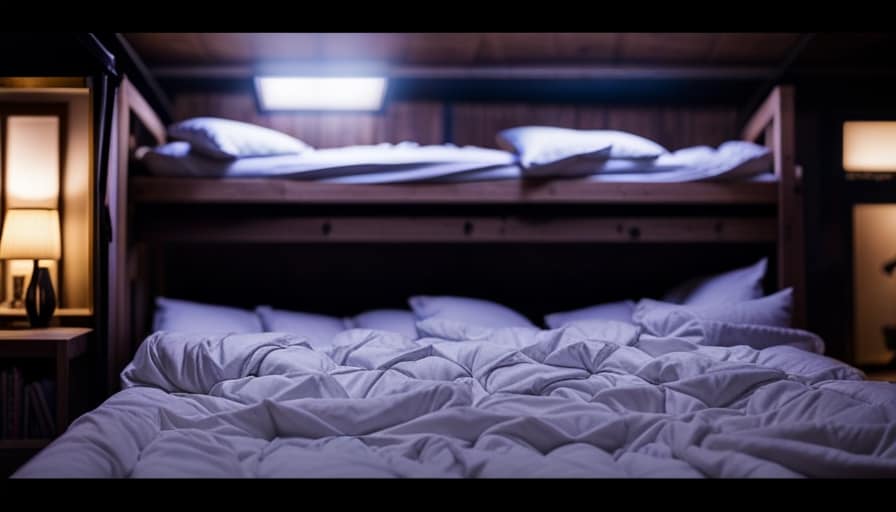
Are There Any Legal Restrictions or Regulations I Should Be Aware of When Living in a Tiny House?
There are legal restrictions and zoning regulations to consider when living in a tiny house. It’s important to research and understand these rules to ensure you can legally and comfortably live in your tiny home.
What Are the Options for Heating and Cooling a Tiny House?
Heating options for a tiny house include electric heaters, wood-burning stoves, and propane heaters. Cooling options may include window air conditioners, portable air conditioners, or ceiling fans. Consider your climate and personal preferences when choosing.
Can I Have Pets in a Tiny House?
Having pets in a tiny house can be a challenge, but it’s not impossible. Zoning restrictions and limited space should be considered, but with proper planning and creativity, you can create a cozy and pet-friendly environment.
How Do I Handle Waste Management, Such as Sewage and Garbage Disposal, in a Tiny House?
Handling waste management in a tiny house involves implementing waste reduction strategies and utilizing composting toilets. These practices promote sustainability and minimize environmental impact. By responsibly managing sewage and garbage disposal, we can create a greener and more efficient living space.
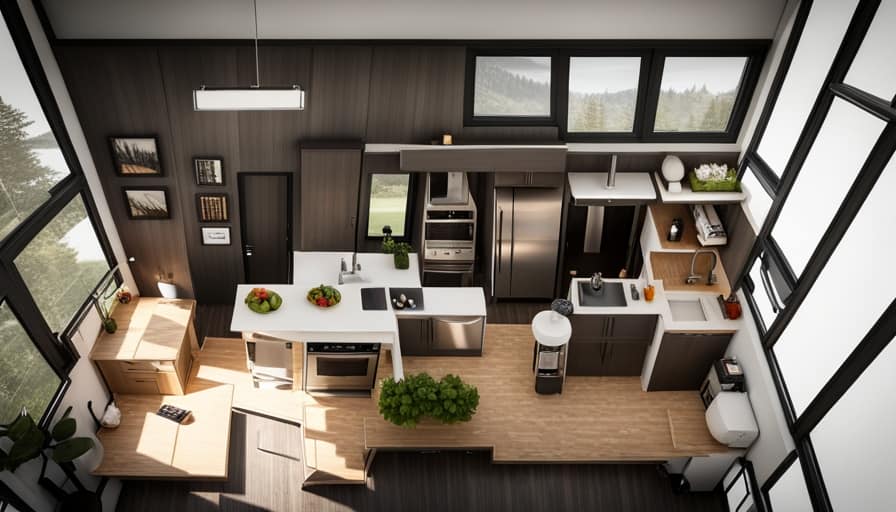
Conclusion
After considering the factors and doing thorough research, I’ve come to the conclusion that a tiny house is indeed the perfect fit for me.
Assessing my space needs, evaluating my lifestyle, and understanding the financial implications have all pointed towards the benefits of minimalism and the challenges of tiny living.
It’s amazing how coincidentally this decision aligns with my desire for simplicity and the need to prioritize what truly matters in life.
Ultimately, a tiny house offers the opportunity for a more fulfilling and sustainable way of living.
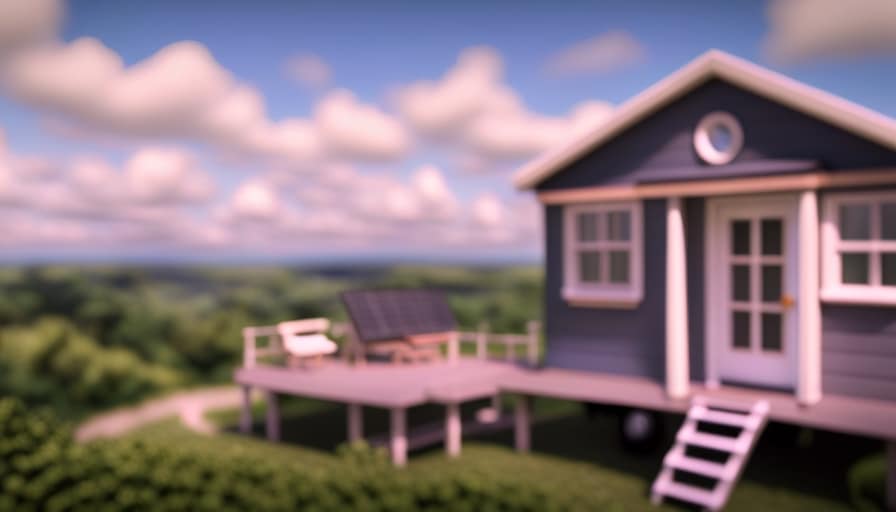
I’m Theodore, and I love tiny houses. In fact, I’m the author of Tiny House 43, a book about tiny houses that are also tree houses. I think they’re magical places where imaginations can run wild and adventures are just waiting to happen.
While tree houses are often associated with childhood, they can be the perfect adult retreat. They offer a cozy space to relax and unwind, surrounded by nature. And since they’re typically built on stilts or raised platforms, they offer stunning views that traditional homes simply can’t match.
If you’re looking for a unique and romantic getaway, a tree house tiny house might just be the perfect option.


